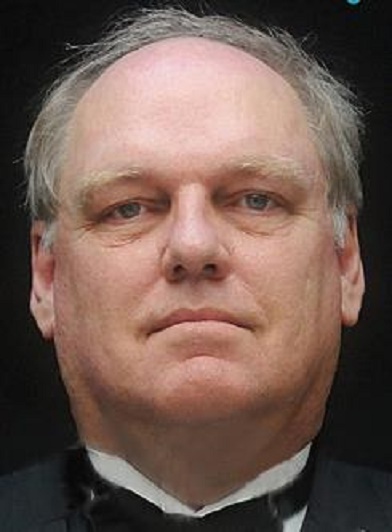
Dr. Trevor Sorensen from the Hawaii Space Flight Laboratory (HSFL) at the University of Hawaii at Manoa will give a virtual talk titled “The Quest for Mission Success: The Clementine Mission” on Friday, March 5, 15:00-16:00 HST.
Zoom link: https://hawaii.zoom.us/j/93358887540
Abstract – Clementine was a joint Department of Defense (DoD) and NASA mission with the dual goals of testing small spacecraft subsystems and sensors in a deep space environment, and also providing a significant science return. Clementine was considered to be one of the first modern-day missions incorporating the philosophy of “faster, better, cheaper” (FBC), taking only 22 months from project start until launch at a total cost of $80 million including launch costs. Clementine was launched on January 25, 1994 from Vandenberg Air Force Base aboard a Titan IIG rocket. After two Earth fly-bys, lunar orbit insertion was achieved on February 19th. Lunar mapping took place over approximately two months in tow systematic mapping passes over the Moon during which nearly two million images were taken. A scheme was devised to obtain virtually 100% lunar coverage despite missed mapping orbits. The lunar phase of the mission resulted in the first global multispectral map of the Moon, detection of probable ice at the lunar south polar region, improved topological maps, and many other scientific accomplishments. However, on May 7, 1994, three days after completing the Lunar Phase of the mission, Clementine suffered an on board malfunction. This malfunction prevented Clementine from performing the planned close flyby of the near-Earth asteroid 1620 Geographos scheduled for August 1994, although the resulting post-failure operations proved the value and robustness of many of the new technologies being tested. The Clementine mission has had an important impact on subsequent NASA and DoD missions, from applications of the technologies tested to the concepts of mission operations and FBC program management.
About the Speaker – Born in Brisbane, Australia, Dr. Sorensen received his BS. (1973), M.S. (1976) and Doctor of Engineering (1979) degrees in Aerospace Engineering from the University of Kansas (KU). After graduating in 1973 he was an aircraft structural engineer for the Air Force at Wright-
Patterson Air Force Base before returning to graduate school at KU. His MS thesis was to design and test, in a wind tunnel, modifications to the Pioneer Venus probes to reduce buffeting. He did his doctoral project on Pioneer Venus at NASA Ames Research Center. He then was a Space Shuttle guidance and control engineer (STS-1 & 2), worked in Mission Control as assistant Flight Director, and finally was a software engineering manager supporting Shuttle missions. In 1990 he joined Bendix Field Engineering (later Honeywell, Inc.) in Alexandria, Virginia, as Observations Manager of the Department of Defense’s LACE satellite. In 1994, Dr. Sorensen was the Lunar Mission Manager for the DoD/NASA Clementine lunar mission for which he received the NASA Medal for Exceptional Scientific Achievement. Dr. Sorensen was the program manager for the $23 million Space Systems Research & Development contract with the Naval Research Laboratory under which the USAF MSTI-3 satellite was operated. He was then technical director for the development of Honeywell’s $16 million global satellite tracking and control system, DataLynx. Dr. Sorensen was an associate professor in the KU Department of Aerospace Engineering 2000-2007. In 2007 he joined the University of Hawaii at Manoa as a specialist professor and project manager in the Hawaii Space Flight Laboratory (HSFL). In December 2014 Dr. Sorensen and two colleagues in HSFL started a technology spin-off company from the University of Hawaii called Interstel Technologies, Inc. This company is developing and marketing a program for comprehensive mission operations called iCOSMOS that was developed at HSFL under a NASA contract. Dr. Sorensen is the CEO of this startup while maintaining his position on the UH Faculty and in the Hawaii Space Flight Laboratory. Dr. Sorensen was the author of the Space Mission Operations chapter in the highly regarded book, Space Mission Engineering – The New SMAD (Microcosm Press, 2011). He was granted tenure by UH-Manoa in 2012. He is a Fellow of the American Astronautical Society, a Fellow of the American Institute of Aeronautics and Astronautics (AIAA), and from 2008-2014 was on the AIAA Board of Directors as the Director of the Space and Missiles Group, which consisted of 14 technical committees. He is a member of the International Space Operations Organization from which he was awarded the Distinguished Service Medal.
Aerospace Engineering Program in University of Hawaii at Manoa
The Aerospace EngineeringProgram (AEP) aimsto addresstechnological and educational concerns and challengesin aeronautics
and space exploration, thereby contributing to the integration of Aerospace Engineering research and education in Hawaii. It
supportsthe recentlyestablishedAerospaceEngineeringConcentration oftheCOE. This Seminar Series is one of the AEP’s efforts
dedicated to disseminating and promoting research and knowledge in a wide range of areas of Aerospace Engineering
(http://manoa.hawaii.edu/aeroeng/)